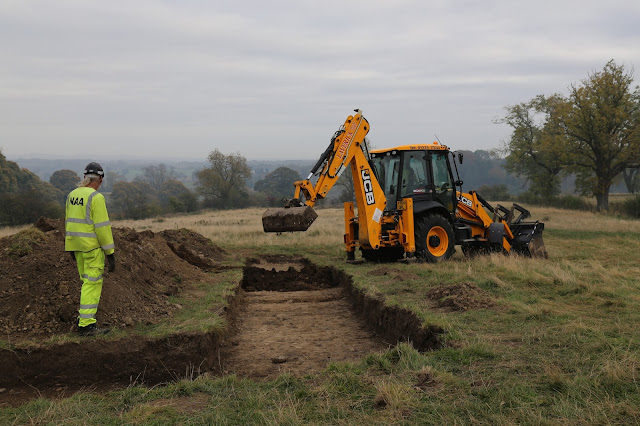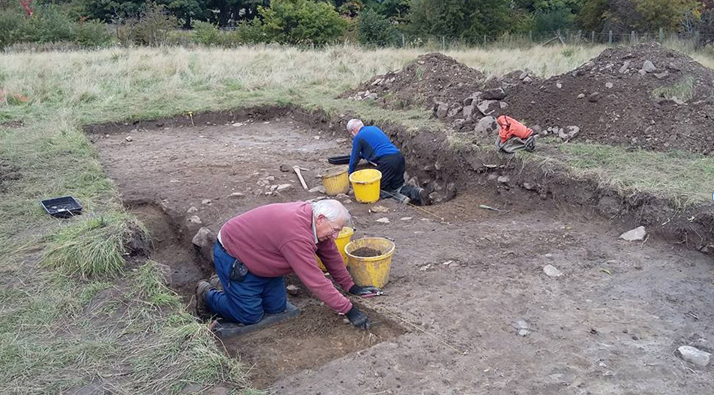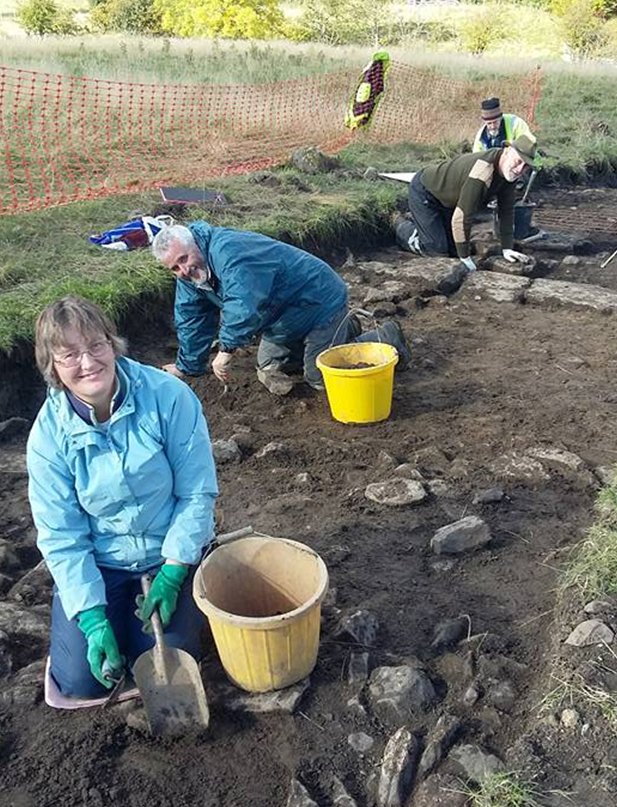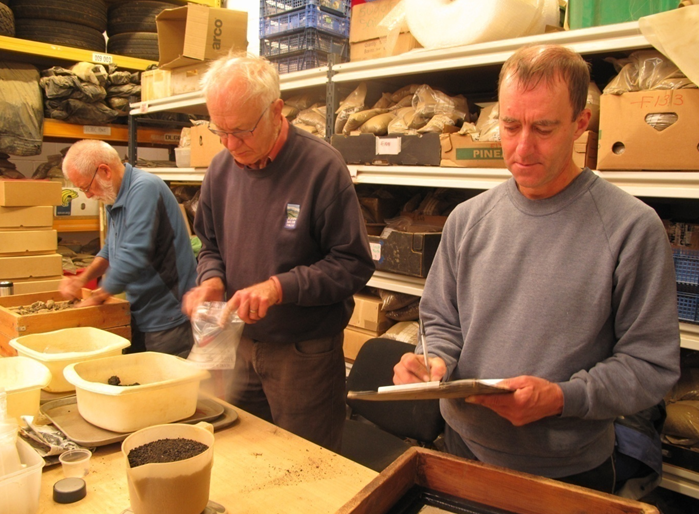Gosh, it has all been so busy this week we have hardly had time to think!
All the trenches are now well underway and it is proving to be a very exciting and surprising site.
Brignall appears to be a site of two halves. Over on the west side, in Trench 2 and 3, excavation has uncovered extensive medieval remains including a substantial flagstone surface. To the south of the surface was a cobble surface, with the stones laid on their ends, much as you get in a stable yard. However, no clear definition of a building, although lots of tantalising semi-straight edges.
Once the flagstone were drawn and photographed they were removed and it appears that the cobbled surface is now running beneath this, possibly forming a fairly substantial road but it all still need further cleaning and investigation. The southern end of Trench 2 is dominated by a deep waterlogged area, possibly the remains of a dew pond.
In Trench 3 we have a deep pit or terminus of a short ditch. This had shown up on the initial geophysics as a Ferris spike and we thought it might be a hearth or kiln, but excavation has returned little evidence of burning. The pit is nearly bottomed out, so we may know more in a few days. There are no features linking this area to Trench 2 which is quite surprising.
Although the preservation in Trench 2 has surprised us, perhaps the most interesting aspect of the dig has been the activity in Trench 1, on the east side of the site. Quite unexpected it looks as if we have found evidence of Neolithic occupation! It just goes to show how unpredictable archaeology can be. We expected medieval and instead have uncovered something much older.
The geophysics had first sent the alarm bells ringing when a circular feature was identified on the eastern side of the field. Trench 1 was located to investigate this and on Day 1 it looked like we had a prehistoric barrow. After hastily applying for the appropriate licences we started excavation and exposed what we thought was a well preserved cist burial, but on excavation this has instead proved to be a large, stone-packed post hole surrounding by smaller post holes. This would suggest occupation rather than funerary use, although the surrounding ditch appears to be much too deep for a hut gully. All in all the feature is proving enigmatic and each day throws up something new, raising more and more questions.
With all this activity we were panicking about finishing in time and it looked like we were going to have to make some tough decision and compromises in terms of the excavation strategy. Thankfully David Mason, the Principal Durham County Council Archaeologist and former Chair of AASDN, has come to our rescue and secured funding for an additional five days of digging. So it is full speed ahead for next week.
Please come along to the open day tomorrow (Saturday 17th) from 10.am to 3.00pm to find out more. You are also welcome to come join us for what promises to be a VERY interesting final week.
































